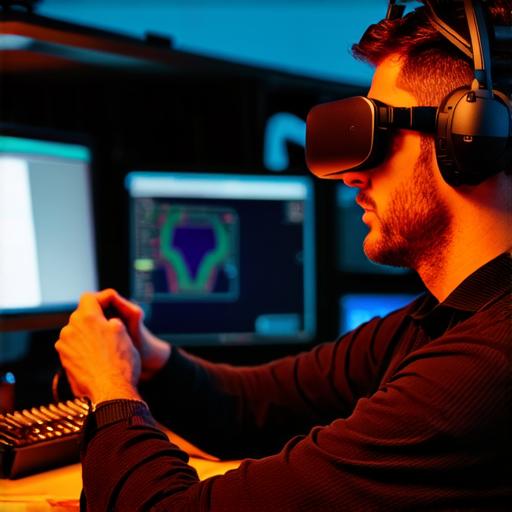The History of Virtual Reality: From Stereoscopes to Arcades
Virtual reality technology has a long and fascinating history that dates back centuries. One of the earliest examples of VR can be traced back to ancient Greece, where philosophers like Thales of Miletus used tools like mirrors to create illusions of depth. These early experiments with stereoscopes laid the groundwork for what would later become virtual reality technology.
In the 19th century, advancements in optics and technology led to new developments in VR. In 1839, William Rowland created one of the first VR devices called the phenakistoscope, which used a series of cardboard disks with drawings on either side to create an illusion of depth and movement when viewed through a small hole.
However, it was in the early 20th century that VR technology really began to take shape. In 1903, Ivan Pavlov used a mirror and a projector to create an immersive experience for his students by placing them inside a dark room with a large screen displaying a black cat.
In the 1950s, VR technology took a turn for the better with the development of head-mounted displays (HMDs). In 1958, the U.S. Department of Defense created the Sword of Damocles, an HMD that allowed pilots to simulate flying in a virtual environment.
As virtual reality technology continued to evolve, it began to find its way into popular culture. One of the earliest examples of VR being used for entertainment can be traced back to the late 1960s and early 1970s when VR arcades were popping up all over the world.
In 1972, the first commercially successful VR arcade opened in California, called the Castle of Monsters. The arcade featured a VR experience that allowed players to ride a roller coaster through a haunted castle.
Over the years, VR technology continued to evolve, with advancements in hardware and software leading to more immersive and interactive experiences. In the 1980s and 1990s, VR was used primarily for research purposes, with scientists and researchers exploring its potential applications in fields like medicine, education, and simulation training.
However, it wasn’t until the development of consumer-grade VR technology in the early 2010s that VR really began to take off. With the launch of devices like the Oculus Rift and HTC Vive, virtual reality technology became accessible to a wider audience, leading to its integration into various industries like gaming, entertainment, and education.
The Future of Virtual Reality: Shaping Our Understanding of What’s Possible
As virtual reality technology continues to evolve, it is becoming increasingly clear that its potential applications are almost limitless. From immersive gaming experiences to medical training simulations, VR technology has the power to revolutionize the way we learn, work, and play.
One of the most exciting developments in VR technology is its ability to transport people into virtual worlds that simulate real-world environments with incredible accuracy. This technology has already been used in fields like architecture and construction, allowing builders to virtually walk through their designs and make changes in real-time.
In addition, VR technology is being explored for use in education, with researchers looking at its potential to enhance the learning experience by creating immersive environments that allow students to interact with complex concepts in a more engaging way.
The future of virtual reality is bright, and as technology continues to advance, we can expect to see even more innovative uses of VR in various industries. With its ability to create incredibly realistic simulations and provide new ways of experiencing the world, virtual reality technology has the potential to shape our understanding of what’s possible and pave the way for a brighter, more immersive future.
Conclusion: From Stereoscopes to Virtual Worlds
The origin of virtual reality can be traced back centuries, with experiments in optics and technology leading to early developments in VR technology. From the use of stereoscopes to immersive experiences in arcades, virtual reality has been a fascinating and evolving field since its inception.

As technology continues to advance, we can expect to see even more innovative uses of VR in various industries, from gaming and entertainment to medicine and education. With its ability to create incredibly realistic simulations and provide new ways of experiencing the world, virtual reality technology has the potential to shape our understanding of what’s possible and pave the way for a brighter, more immersive future.
FAQs:
1. What is the history of virtual reality?
Virtual reality technology has a long and fascinating history that dates back centuries. Early experiments with stereoscopes and immersive experiences in arcades laid the groundwork for what would later become VR technology.
…
